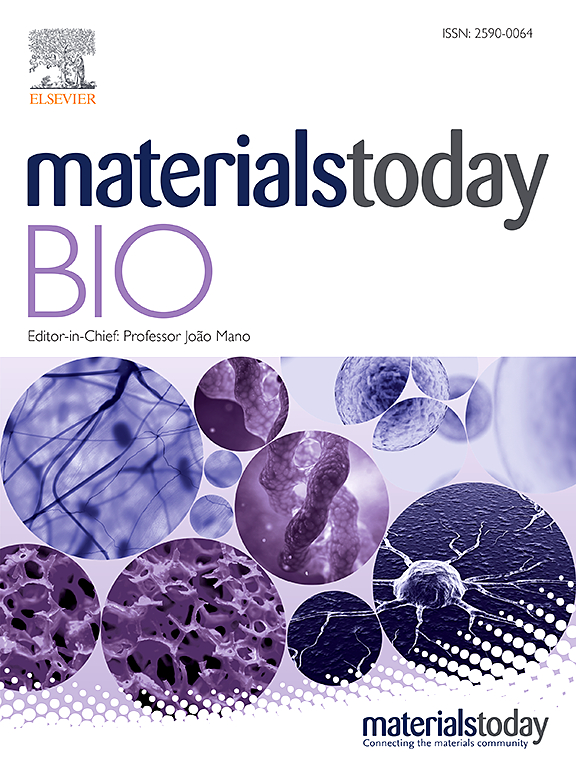Sex-stratified osteochondral organ-on-chip model reveals sex-specific responses to inflammatory stimulation
IF 8.7
1区 医学
Q1 ENGINEERING, BIOMEDICAL
引用次数: 0
Abstract
Osteoarthritis (OA) is a musculoskeletal degenerative disease characterized by alterations in cartilage and subchondral bone leading to impaired joint function. OA disproportionally affects females more than males, yet the molecular mechanisms underlying these biological sex differences remain elusive. Current therapeutic strategies to halt the progression of OA are still lacking, in part due to the limited predictive potential of standard models which often do not account for sex disparities. Herein, an organ-on-chip microfluidic platform was developed to model the osteochondral unit, composed of adjacent bone and cartilage culture chambers, and capture sex-specific hallmarks of OA. Sex-stratified human primary chondrocytes and osteoblasts were compartmentalized within biomimetic hydrogels emulating the bone-cartilage interface, which were subjected to inflammatory triggers to mimic the onset of OA. We confirmed that interleukin-1β and Tumor Necrosis Factor-α stimulation triggered upregulation of pro-inflammatory cytokines and matrix metalloproteinases related genes in all donors, with marginal trends for increased expression in female cells. In addition, metabolic labeling coupled with confocal imaging revealed that inflammatory stimulation modulated extracellular matrix deposition by human chondrocytes in a sex-specific fashion. Not only matrix deposition but also matrix remodeling was altered upon inflammation, leading to a significant reduction in matrix stiffness in both cartilage and bone compartments. Overall, sex-stratified osteochondral unit on-chips offer novel insights into sex-specific cellular responses to inflammatory insults, demonstrating the importance of incorporating sex stratification in emergent organ-on-chip models. Thus, this platform provides a physiologically relevant 3D microenvironment to further investigate sex-specific drivers of OA, paving the way for targeted therapies.

求助全文
约1分钟内获得全文
求助全文
来源期刊

Materials Today Bio
Multiple-
CiteScore
8.30
自引率
4.90%
发文量
303
审稿时长
30 days
期刊介绍:
Materials Today Bio is a multidisciplinary journal that specializes in the intersection between biology and materials science, chemistry, physics, engineering, and medicine. It covers various aspects such as the design and assembly of new structures, their interaction with biological systems, functionalization, bioimaging, therapies, and diagnostics in healthcare. The journal aims to showcase the most significant advancements and discoveries in this field. As part of the Materials Today family, Materials Today Bio provides rigorous peer review, quick decision-making, and high visibility for authors. It is indexed in Scopus, PubMed Central, Emerging Sources, Citation Index (ESCI), and Directory of Open Access Journals (DOAJ).
 求助内容:
求助内容: 应助结果提醒方式:
应助结果提醒方式:


